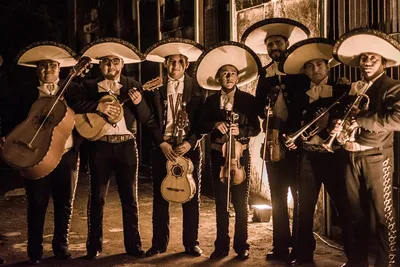
Mariachi: Echoes of Tradition, Harmony of Mexican Cultural Heritage
Mariachi: Echoes of Tradition, Harmony of Mexican Cultural Heritage
Hey folks, today I want to talk about one of my favorite music genres, Mariachi, Mexico’s most representative cultural and musical expression.
Although uncertain, the origins of this unique music are many and varied.
Nevertheless, the lyrics of one of the most famous Mariachi songs (Cocula, by Jorge Negrete) suggest it was born in Cocula, Jalisco.
“De Cocula es el mariachi, de Tecalitlán los sones….”.
Many others believe it has international roots, as the name Mariachi derives from the French word “mariage,” which means “marriage.” But over time, it was transformed.
Other theories affirm that it originated in the states of Jalisco and Michoacan.
One thing is for sure, the town of Paracho Michoacan is the number-one guitar producer in Mexico.
Mariachi music origin
When the Spanish friars arrived during the conquest, they noticed the ease with which the locals of Cocula were able to create sounds.
Friar Miguel de Bolonia transformed ancient melodies dedicated to their ancestral Aztec deities into praises to the Mother of Jesus and Saint Michael the Archangel.
He believed that music was the language God had decided to use to communicate with them.
Thus, Cocula’s musicians transformed not only their native rhythms but also adopted Spanish instruments such as the violin and the guitar.
In ranches near Cocula, the “violins del cerro” were born.
They invented the vihuela with an armadillo shell and later the guitarrón with strings of animal guts.
Obviously, these sounds are not the same after the transition to modern instruments. But it’s the same idea.
Where did the Mariachi costume originate? Is it Mexican?

Whenever we talk about Mexico, we immediately associate it with tequila, tacos, and Mariachi.
However, Mariachi is not just about the music, but also the fancy attire with the giant rounded hat that attracts the attention of tourists.
It is said that the Mariachi (Charro) costume has a Spanish influence, as it was worn by landowners or wealthy people.
The Mariachi attire consists of a wide-brimmed hat, pants with chaps, a jacket with metal buttons, and boots, but it has several variations depending on the occasion.
Its origin is Mexican, and it was in the XVI century when the countrymen, also called “chinacos,” were using this type of clothing that later would be known as the charro suit.
Maximilian of Habsburg, the second emperor of Mexico, was attracted by the suit and adopted it to identify himself to others.

Although he made it go through some changes. He evolved it with fine craftsmanship, silver and gold buttons, and remarkable European embroidery, but always keeping that Mexican touch.
Let’s take a closer look at these four different types of Mariachi suits:
- Faena Suit: The most usual for competitions.
- Traje de Media Gala: It is more ornamented and more detailed. Also used for rodeo shows.
- Gala Costume: It can be used on horseback but not to execute any type of work or competition.
- Black bow suit: This is the most elegant of all; it is used on special occasions but never for horseback riding.
The Mariachi instruments
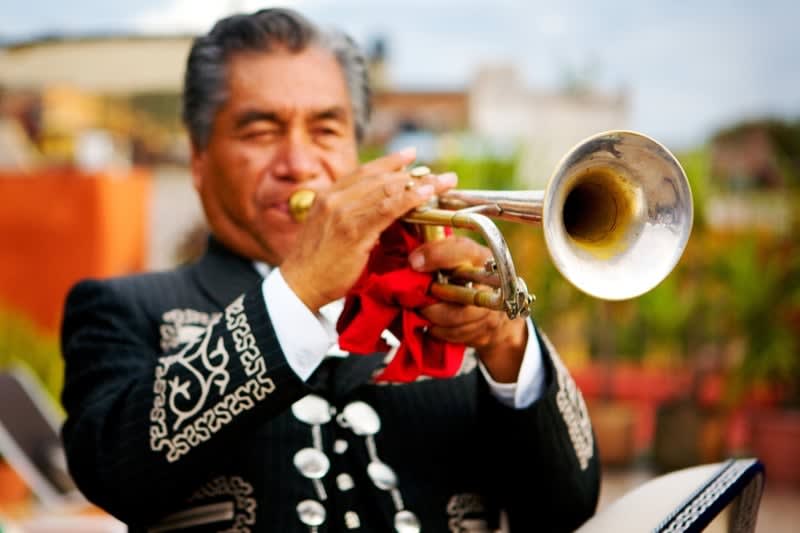
Violins
The violin is one of the leading musical instruments played in Mariachi.
In mariachi bands, violins usually have a large presence in the orchestra.
This instrument has been in the Mariachi folklore since its early days as the Mexican vihuela’s driving force.
Its use dates back to the 1700s, adding a special touch to what was already known.
Guitarra de golpe
The “guitarra de golpe” is the key instrument in the mariachi. It can be traced back to the Italian version of “chitarra battente.”
This guitar has the particularity of having five strings forming five orders.
However, the classical guitar has replaced this one over the years, and some mariachi groups are beginning to revive it among their instruments.
Vihuela
The vihuela is a small six-stringed guitar heavily used in Mariachi.
This particular guitar dates back to the Spanish and Portuguese Renaissance of the 16th century.
The Mariachi vihuela differs from the classic Spanish vihuela: the Mexican vihuela has five strings, is small, and has a round back.
In contrast, the Spanish vihuela is similar to the classic guitar, with six strings.
Guitarrón
The Mexican guitarrón is the bass instrument within the Mariachi instrument setup.
The guitarron resembles the guitar and is a native Mexican instrument dating back to the 19th century.
The body of the guitarrón is larger than that of the classical guitar, and its handle is much shorter.
Harp
The harp is one of the stringed instruments that make up Mariachi.
This instrument has had significant cultural and artistic value since the early beginnings of Mexican and Latin American folklore.
The harp is a primary heritage in classical Mexican music and Venezuelan joropo, although the musical technique varies from genre to genre.
Trumpet
The trumpet was the last instrument to be included in Mariachi in the historical timeline.
Although the trumpet is not part of some classic Mariachi groups, it has an almost leading role in the musical presentations of the modern era.
A characteristic of the mariachi trumpet is its extraordinary clarity, unlike other trumpet techniques.
Where do Mariachi bands play in Mexico?
Although there are many places to enjoy a live Mariachi band, I will mention five major cities depending on where you are in Mexico.
1. Garibaldi Square, Mexico City
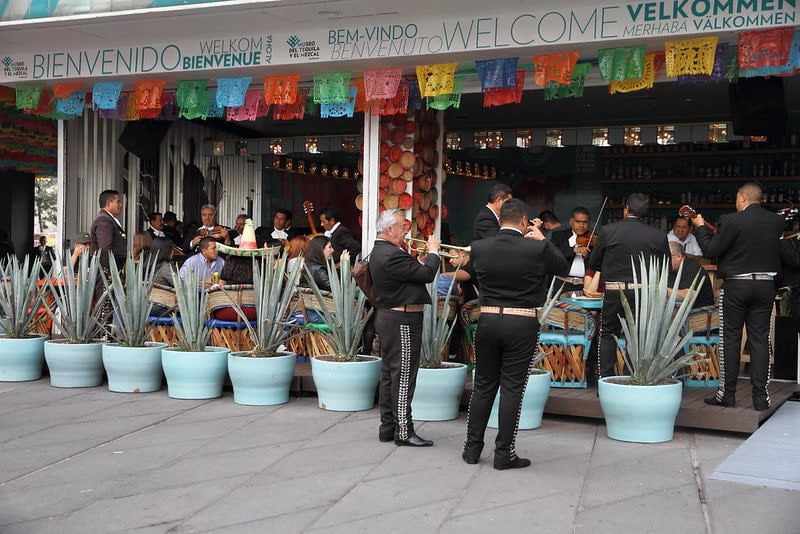
Known as Plazuela de Jardin during Colonial times and later as “El Baratillo,” Plaza Garibaldi has been known since 1921 when it was named in honor of Jose Garibaldi, an Italian who participated in the Mexican Revolution.
Another popular spot is the Tenampa Salon, a cultural venue representing the state of Jalisco with tequila, Mariachi, birria, and pozole, founded in 1925.
It is in the Historic Center of Mexico City, near the Tepito neighborhood.
2. Plaza de Los Mariachis, Guadalajara
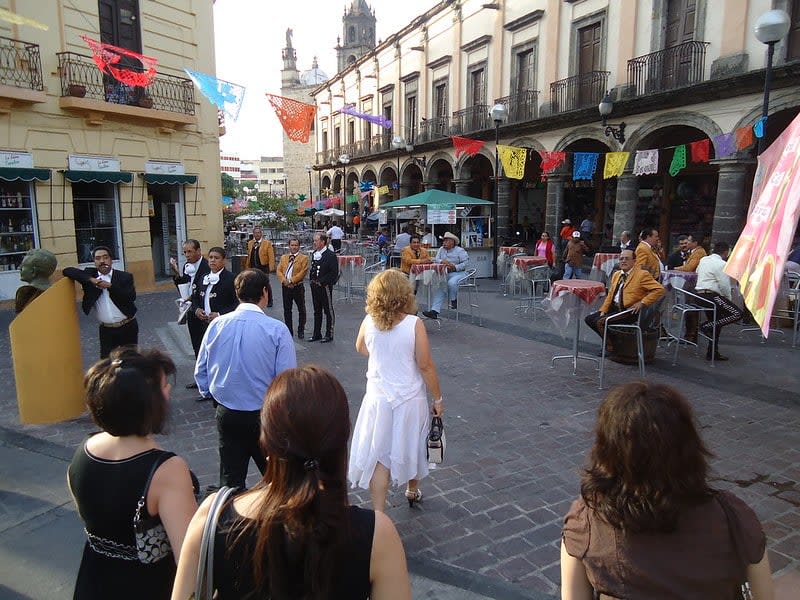
If you are in Guadalajara, you will find the emblematic Plaza de Los Mariachis, an open-air patio surrounded by old houses with bars and restaurants.
This place has more than 100 years of tradition and was created as the meeting point for the local Mariachis.
Plaza de Los Mariachis is in downtown Guadalajara next to the famous San Juan de Dios market.
3. Jardin de la Union, Guanajuato
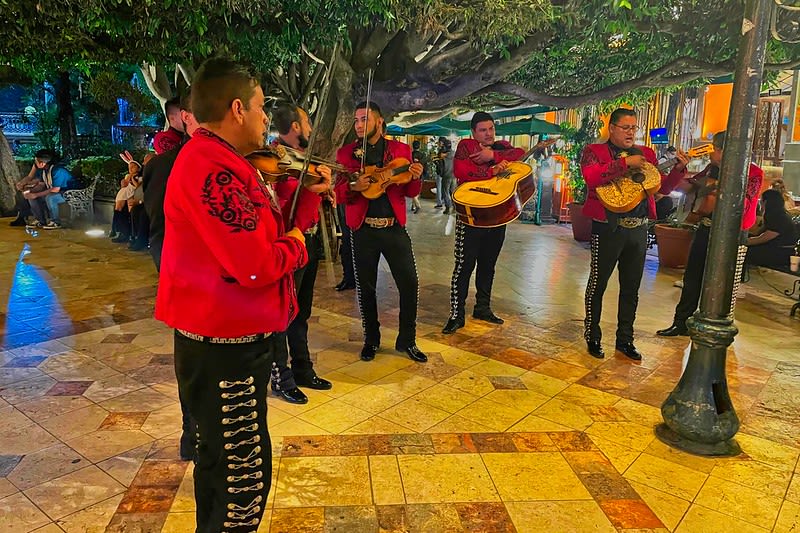
It is one of the symbolic spots in Guanajuato City.
You can enjoy snacks accompanied by live Mariachi music that can sing to you from the terrace.
Perfect for a romantic date in front of the iconic Teatro Juarez.
4. Plaza del Mariachi, Chihuahua
This plaza is unique in its architecture due to its majestic entrance of large arches resembling Chihuahua’s ancient aqueducts.
It is a fundamental part of the city’s historic center, and here you can find a diverse offer of authentic regional and Mexican foods along with Mariachi music.
5. Santa Cecilia Square, Tijuana
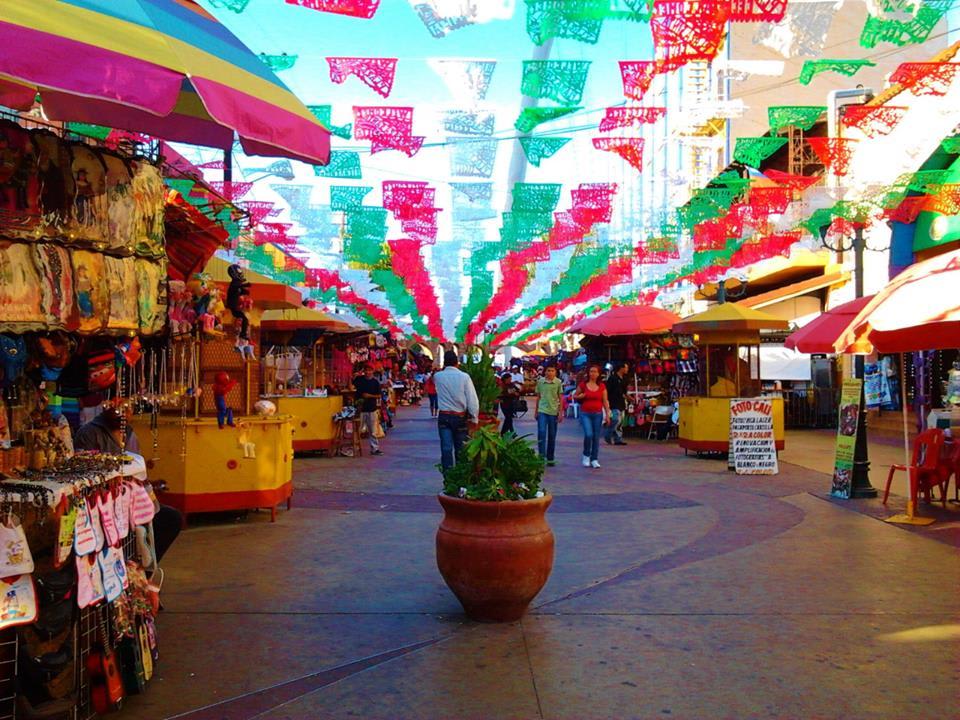
Santa Cecilia is one of the oldest squares in Tijuana and is named after the Patron Saint of Musicians, Santa Cecilia.
It is typical to find Mariachis, norteño, and trova groups here.
You can also find Mexican handicraft shops, bars, and restaurants. Santa Cecilia Square is between First Street and Revolucion Avenue.